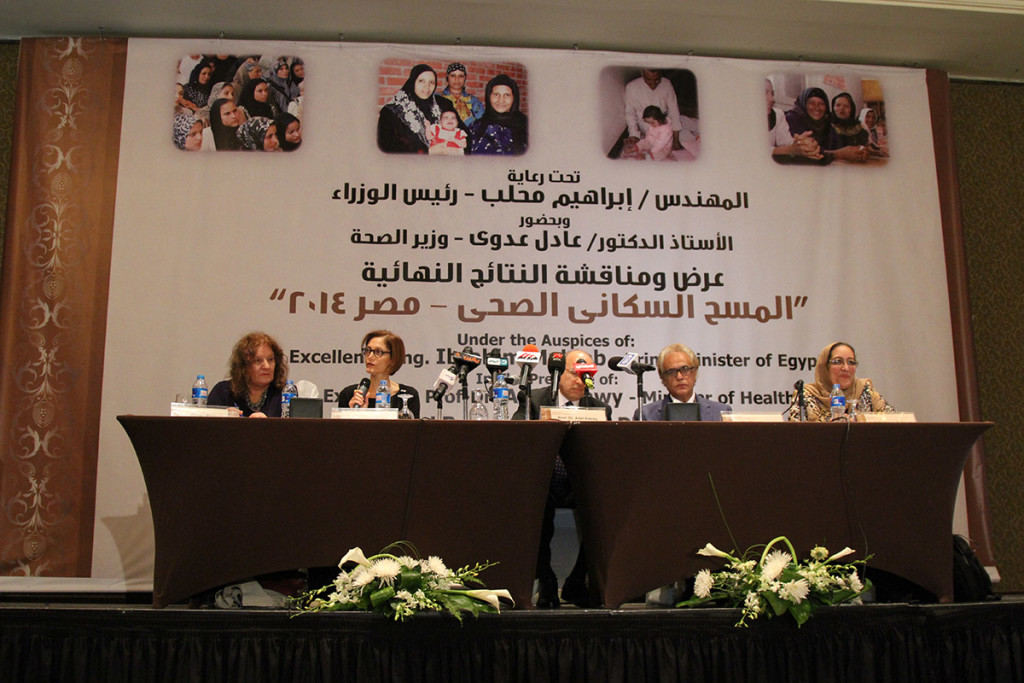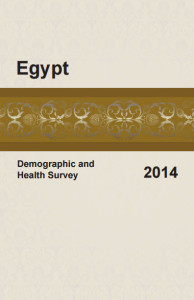The Launch of the 2014 Egypt DHS
Very few countries have as much experience with The DHS Program as Egypt. Since 1988, Egypt has implemented seven standard DHS surveys, three Interim Surveys, one In-Depth Study, and two Service Provision Assessment Surveys (SPA). Data collection is almost completed for a Health Indicator Survey (HIS), and plans are underway to start another SPA.
So any time a DHS is released in Egypt it is a big event. On May 10, 2015, the Minister of Health, Dr. Adel Adawy, and USAID/Egypt Mission Director Sherry Carlin along with about 300 guests gathered at the Grand Nile Towers Hotel to hear the latest findings about the health status of the Egyptian people from the 2014 Egypt DHS.
The news is very mixed. On the positive side, child mortality has declined and maternal health indicators have improved. Now, 9 in 10 women receive at least 4 antenatal care visits, and 92% give birth with the assistance of a skilled provider—a far better maternal care profile than the rest of Africa. On the negative side, the 2014 EDHS reports that an astonishing percentage of births are by Cesarean section. Nationwide, C-sections account for just over half (52%) of all deliveries in the five years before the survey—one of the highest rates in the world. Three governorates, Port Said, Damietta, and Kafr El Sheikh, report 70% or more C-section deliveries among all births. Participants at the national meeting called for more research and government action to reduce the high rate of surgical deliveries.
Another negative finding is the increase in fertility reported in the 2014 EDHS. Now, the total fertility rate, or average number of births per woman is 3.5, up from 3.0 in 2008. For a crowded country like Egypt, this is worrisome news, indeed. Family planning use has remained the same overall, but women are switching from long-acting IUDs to the pill.
Egypt has a long history of acting on the results of the DHS. The 1988 survey led to a new community health program to increase awareness of the importance of antenatal care. When the 1995 EDHS showed that 97% of ever-married women had undergone female genital circumcision (FGC), widespread calls for action led to a ban on FGC in 1996 and a national law criminalizing the practice in 2008. FGC still persists in Egypt, but the percentage of women reporting that their daughters under age 18 were or would be circumcised dropped from 70% in 2005 to 45% in 2008, and rose again to 56% in 2014. In some governorates less than one in four daughters are expected to be circumcised.
Getting this important information out to the public health community is a priority for USAID and the Ministry of Health. The DHS Program is collaborating with these organizations plus the local implementing agency El Zanaty and Associates and a local non-profit communication organization, Ask Consult for Health, to disseminate the survey results through fact sheets, policy briefs, and fact-to-face meetings.



